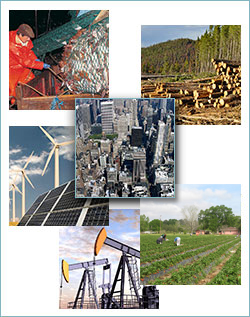

Resources
2013 MAM Homepage
Announcement
Theme Essays
Theme Poster
MAM 2013 Blog
Committee
Sample Press Release
Educational and Related Resources
Linking Icons
Activities Sustainability Counts Initiative Speakers Bureau General Information Social Media |
Mathematics Awareness Month - April 2013
|
||||||||||||||||||||||
Learn more about the interconnected nature of these resources |
||||||||||
 |
 |
 |
 |
 |
 |
 |
 |
 |
 |
 |
 At present, 50% of the world’s 7 billion people live in cities. Demographers, using mathematical models, predict that by 2050 the world’s population will rise to over 9 billion and that 70% of these people will live in cities. So an important aspect of creating a sustainable world will be building sustainable cities.
At present, 50% of the world’s 7 billion people live in cities. Demographers, using mathematical models, predict that by 2050 the world’s population will rise to over 9 billion and that 70% of these people will live in cities. So an important aspect of creating a sustainable world will be building sustainable cities.
Architects and engineers are developing more energy efficient buildings. Presently buildings account for about 40% of U.S. energy consumption. City planners are looking at the overall systems that support life in a city and considering the benefits of creative green approaches. They use math to determine how well these approaches will work and how much they will cost.
As cities get larger and denser they will require more food and resources to sustain them. How will we balance the needs of cities for food, for energy and other resources, against the needs of the environment and against the needs of non-urban residents who work to meet these needs?
Mathematics Awareness Month is sponsored each year by the Joint Policy Board for Mathematics to recognize the importance of mathematics through written materials and an accompanying poster that highlight mathematical developments and applications in a particular area. |